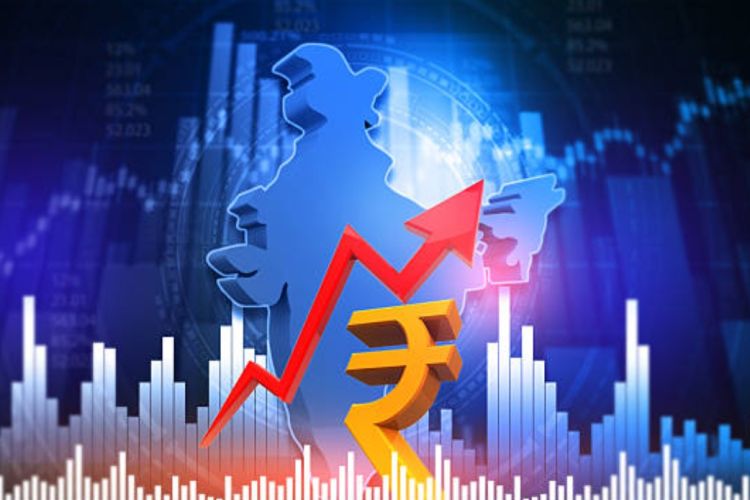
GST reforms and FDI surge: Despite a year marked by global headwinds, the government and the Reserve Bank of India remain upbeat about the Indian economy’s trajectory. The latest RBI bulletin projects gross domestic product (GDP) growth of 6.5% in FY26, with the third quarter at 6.6% and the fourth at 6.3%. Actual growth in the first quarter surprised on the upside at 7.8%, a five-quarter high. A near 18-year high in the manufacturing purchasing managers’ index (PMI), moderating inflation, and GST 2.0 reforms have reinforced optimism that the second half of the fiscal year will sustain momentum.
The broader global backdrop adds to this optimism. After more than two years of aggressive tightening, the US Federal Reserve cut its benchmark interest rate in September, joining the European Central Bank and the Bank of England in loosening policy. The shift reflects slowing growth in advanced economies and persistent disinflationary pressures. The IMF has warned that global growth will stay below the pre-pandemic average, with trade volumes weighed down by protectionism and geopolitical tensions. Yet, the Fed’s easing has lowered global bond yields, revived risk appetite, and triggered capital flows into emerging markets, including India.
READ | AI-generated drug reaches human trial milestone
This turn in the global cycle has helped the rupee stabilise and strengthened investor confidence. For India, which has been wrestling with high US tariffs on key exports, the Fed’s policy pivot could offset some of the external pressures by lowering the cost of capital and drawing fresh inflows into equities and debt.
GST reforms and consumption boost
The most decisive policy action this year has been the launch of GST 2.0. New tax rates that took effect this month lowered prices on a range of goods, from toothpaste to air conditioners. Combined with earlier income tax relief measures and stronger employment generation, the reforms are expected to lift consumption. The RBI notes that easier monetary conditions—a 100 basis-point cut in the policy repo rate so far this year—along with higher kharif sowing and healthy corporate balance sheets should further support demand.
For businesses, GST 2.0 simplifies compliance and addresses long-standing distortions such as the inverted duty structure. The reforms are especially significant for micro, small and medium enterprises and startups, where compliance costs have been high.
High-frequency indicators for August show manufacturing and services activity at decadal highs. Foreign direct investment (FDI) has also rebounded, with inflows hitting a 38-month high of $5 billion in July. Net inflows for April–July stood at $10.75 billion, compared with just $3.5 billion a year earlier. The surge was driven by stronger gross inflows and slower outward remittances. Singapore led the pack, followed by the Netherlands, Mauritius, the US, and the UAE, which together accounted for over three-fourths of the total.
NBFCs and credit growth
Non-banking financial companies (NBFCs) have returned to double-digit credit growth, financing infrastructure, housing, vehicles, and consumer goods. Their balance sheets remain sound, with profitability and prudential indicators such as return on assets, net interest margins, and non-performing assets at healthy levels. The introduction of the Liquidity Coverage Ratio will strengthen short-term resilience, though the RBI has warned NBFCs to guard against cyber risks as adoption of artificial intelligence and machine learning grows.
Managing inflation remains central to monetary policy. Headline CPI edged up slightly in recent months, mainly due to food prices, but has stayed below the RBI’s target band for seven straight months. Core inflation also rose modestly, reflecting firmer gold prices. Globally, inflation has also moderated, with the US and euro area recording their slowest price rises in nearly three years, creating space for central banks to loosen policy.
Indian economy’s external sector resilience
India continues to face pressure from high US tariffs on its exports, but the external sector has held up. The current account deficit (CAD) narrowed in the first quarter of 2025-26, supported by resilient services exports and robust remittance inflows. The RBI expects the CAD to remain low and stable through the year, even amid heightened trade uncertainty. The Fed’s rate cut is likely to further support India’s external account by attracting portfolio inflows, improving reserves, and easing currency volatility.
The October 1 monetary policy review will be the first since Washington imposed punitive tariffs on Indian goods. Most economists expect the RBI to hold rates steady, though some—including Barclays and Capital Economics—argue for further easing. With the Fed pivoting to rate cuts, pressure on the RBI to follow suit has intensified. India has already cut rates by 100 basis points this year, but global uncertainties may prompt the Monetary Policy Committee to wait until December before easing again.
India’s macroeconomic outlook today contrasts sharply with last year’s. From low growth and high inflation, the economy has pivoted to strong growth and moderating prices. If consumption continues to firm up and investment momentum sustains, the combination of supportive global monetary conditions and domestic policy reforms may finally trigger the virtuous cycle that policymakers have long sought.
